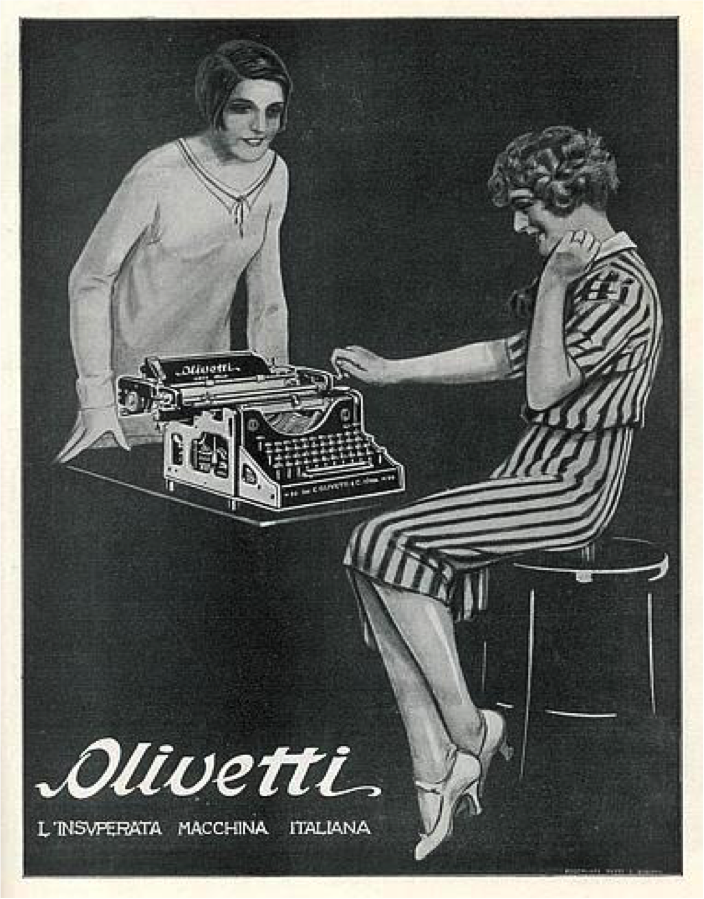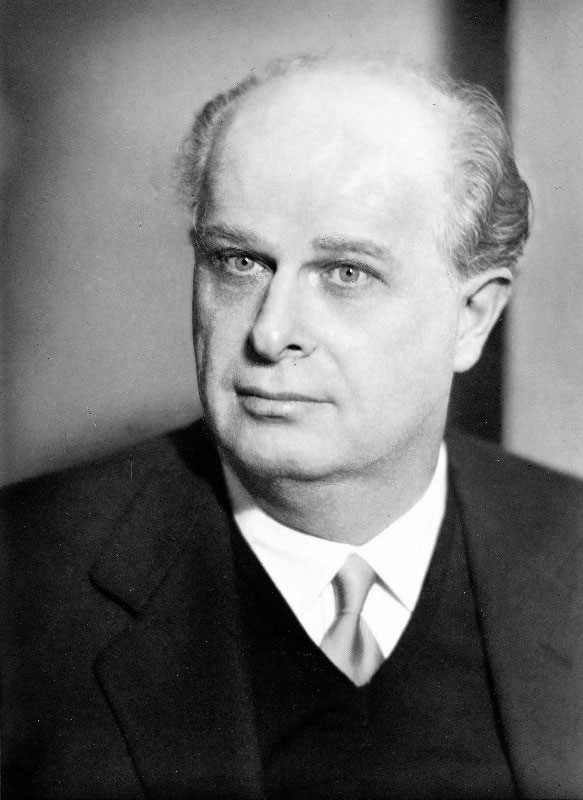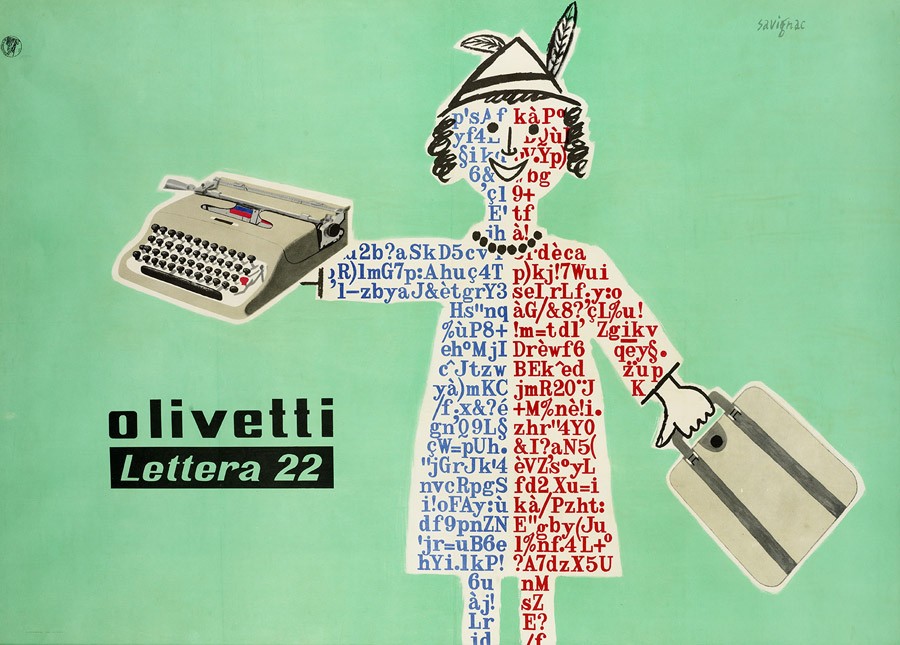Comments (0)

Olivetti typewriters - by Cecilia Vitiello
Artebaz is happy to introduce a new blog section about the history of Italian design. We decided to start writing about the Olivetti SpA and its typewriters.Everything begins with Camillo Olivetti (1868 – 1943), a man with a strong personality descending from a wealthy family of Jewish and Waldensian origins. In 1895, at the age of 27, after having graduated in Industrial Engineering, he starts the construction of the famous building with red bricks in Ivrea, helped by two business partners and thirty local craftsmen to whom he taught the job himself.
On October 29th 1908 the enterprise becomes Società Ing. C. Olivetti e C., the first national typewriter factory.In 1911, the first typewriter model, the M1, is exposed at the World’s Fair held in Turin, a fact that leads to the mass production and to success. Cammillo builds every piece in his factory, screws included, almost exclusively with a handmade work process, although the M1 isn’t thought to be an art object, it has a dark and dour look.In 1924 the annual production reaches 4000 typewriters for 400 employees. The first generation of workers is now the élite of the factory, supported by a few graduates. Camillo, a strict and yet beloved boss, spends most of his time working side by side with his people.“There is no difference between manual work and intellectual work. Every job requires an intellectual effort if it is done properly” - Camillo OlivettiAdriano Olivetti (1901 – 1960), unlike his father isn’t good at manual work, but decides to dedicate himself to the factory anyway. In 1928, after a period spent in the US studying American business, he makes the company into a great industry with a scientific work organization.The Wall Street Crash of 1929 for the Olivetti has paradoxically a positive effect thanks to the failure of its competitors. In the same year a branch is opened outside of Italy, followed by many others over the years to come, marking the entry into in the international commerce and the supremacy in the national typewriter market.Adriano can finally start the project of the MP1, the first portable typewriter, with a functional and likable look. But the production isn’t the only thing he cares about: in the same period the factory is renewed and enlarged with sport facilities, canteens, libraries and kindergartens for the workers and their families.The 1940 is the year of the Summa, the first calculator designed with the “Olivetti style”, rational and bright, whose symbol is the simple and famous oval “O”.During the Second World War, father and son strive to overthrow the fascist regime and to work with the Anglo-American allies. Adriano gets incarcerated for a couple of months and then is obliged to leave Italy while a 75 year old and dying Camillo is forced to hide from the Nazis. At the end of the war the company situation is not as bad as the rest of the country, it hasn’t been bombed and it is not in debt. Adriano decides to base his recovery policy on the production of high technology calculators and on a wage rise for his employees: Olivetti is soon back on track!We have to wait until 1950 to see what has become an Italian design icon, the Lettera 22, the typewriter that outclasses the MP1 and becomes a masterpiece of lightness, functionality and design. This model gains a great success and several design awards. One year before Adriano’s death he achieves his last important goal: the acquisition of the Underwood, an American company. The Olivetti has managed to became a multinational company without loosing its virtues or traditions, and enhancing the people that work there. Today, some models of the Lettera 22 are exhibited in museums such as the MoMa, the Museum of Modern Art of New York, proving how this typewriter and the men that made it have marked the history of Italian and international design.
LIST OF BOOKS CONSULTED– Daniele Ungaro, Capire la società contemporanea, Rome, Carocci Editore, 2001.– Valerio Ochetto, Adriano Olivetti, Venice, Marsilio Editore, 2009.– Giuliana Gemelli and Flaminio Squazzoni, Il ruolo del “Servizio di ricerche sociologiche e studi sull’organizzazione” nell’innovazione strategica della società Olivetti (1955-1975)”, paper published in NEHS/NESSI. Istituzioni, mappe cognitive e culture del progetto tra ingegneria e scienze umane”, Bologna, Baskerville, 2003.
2018-06-12 Artesan Blog







